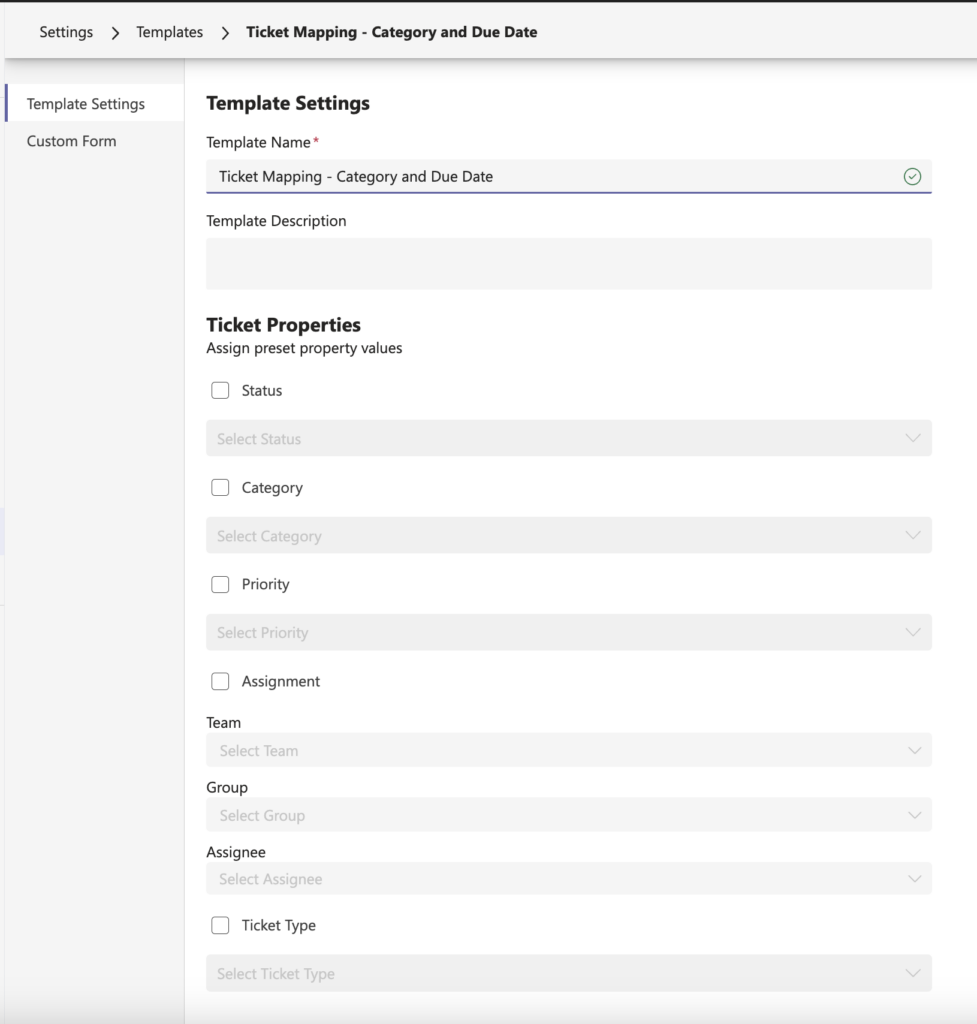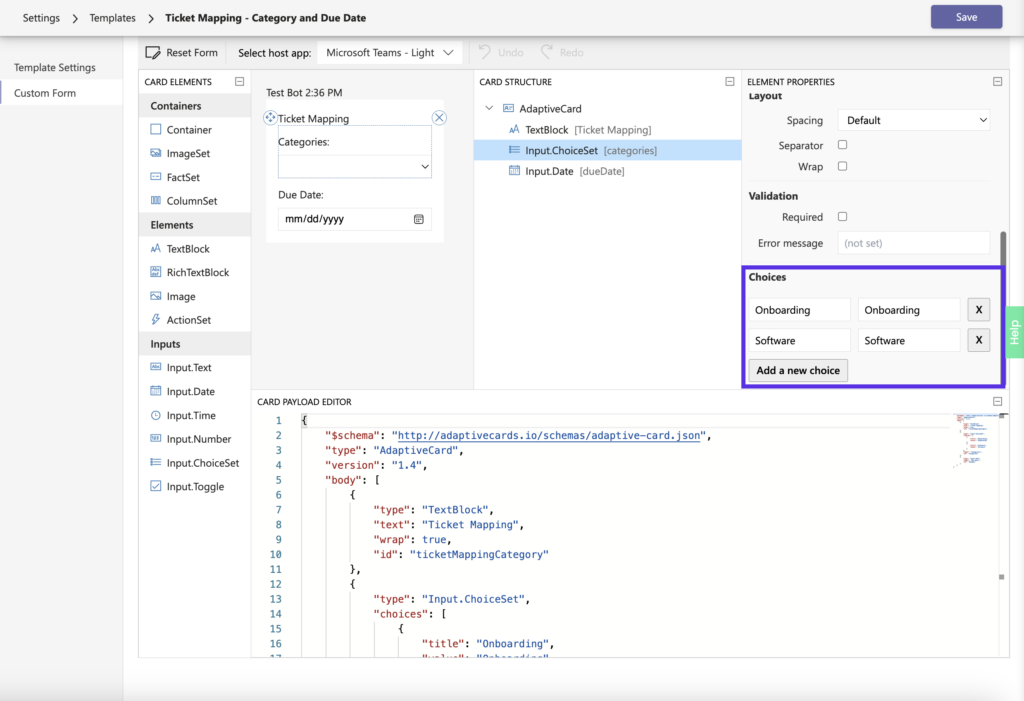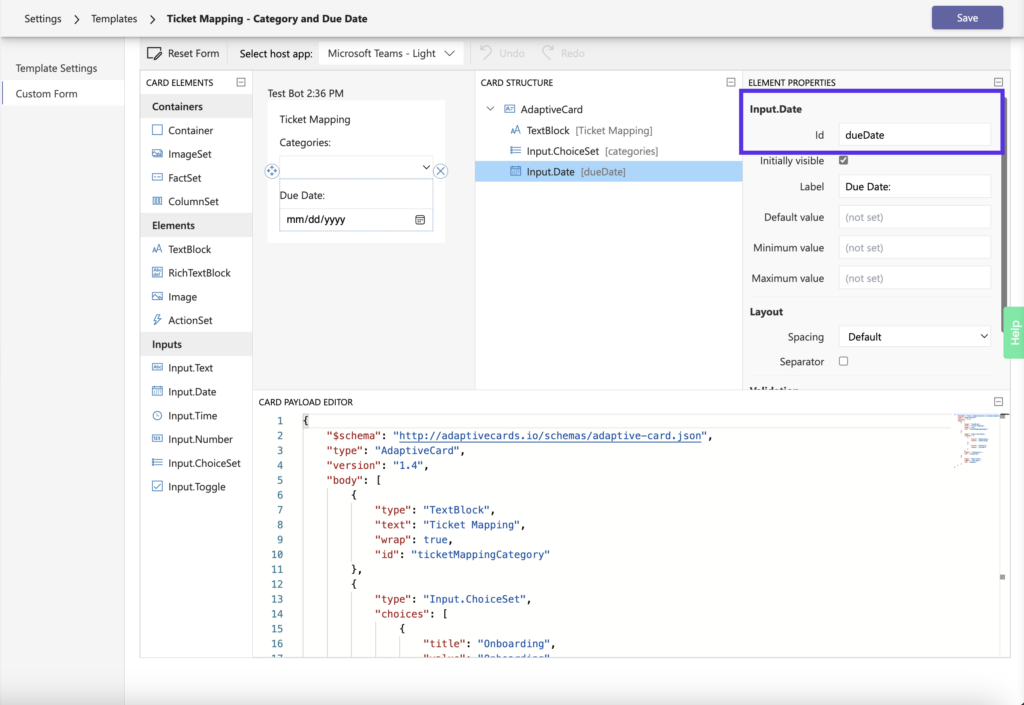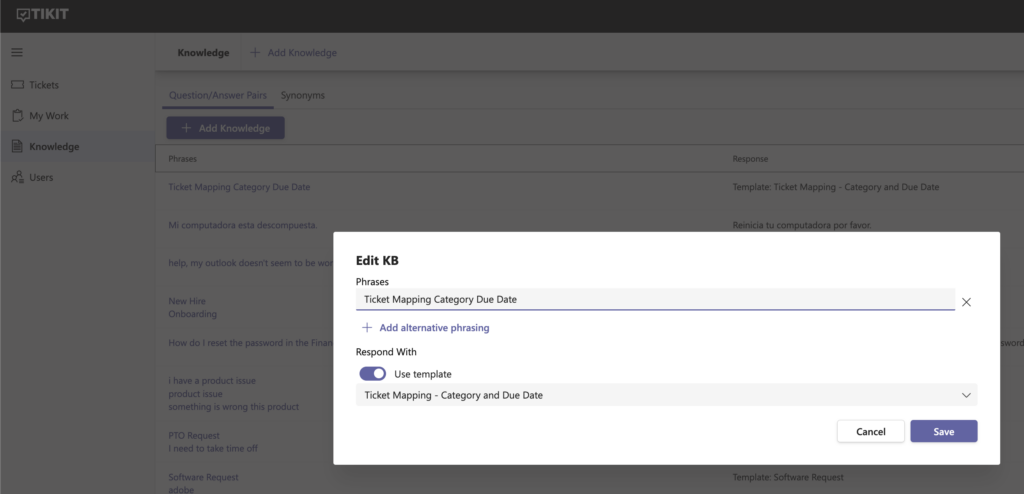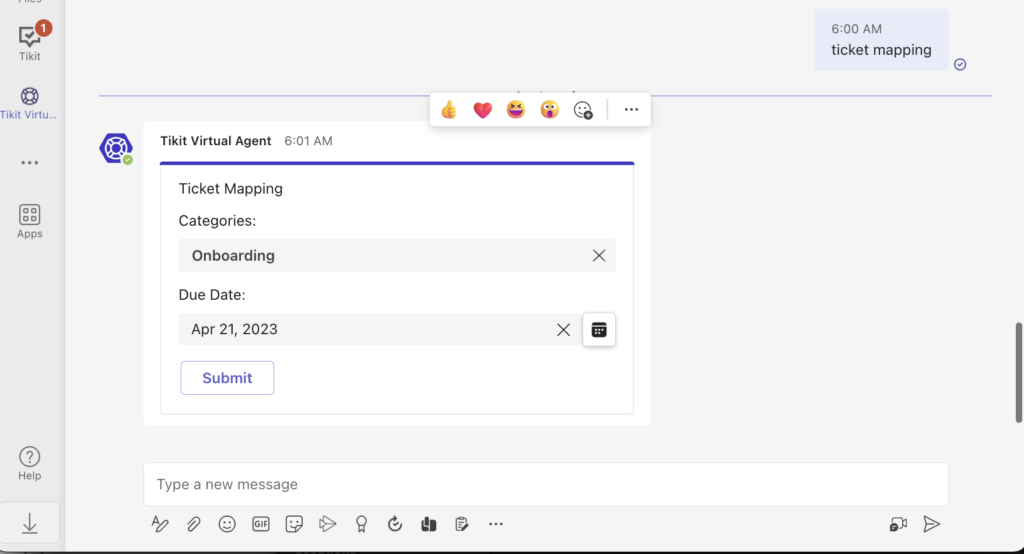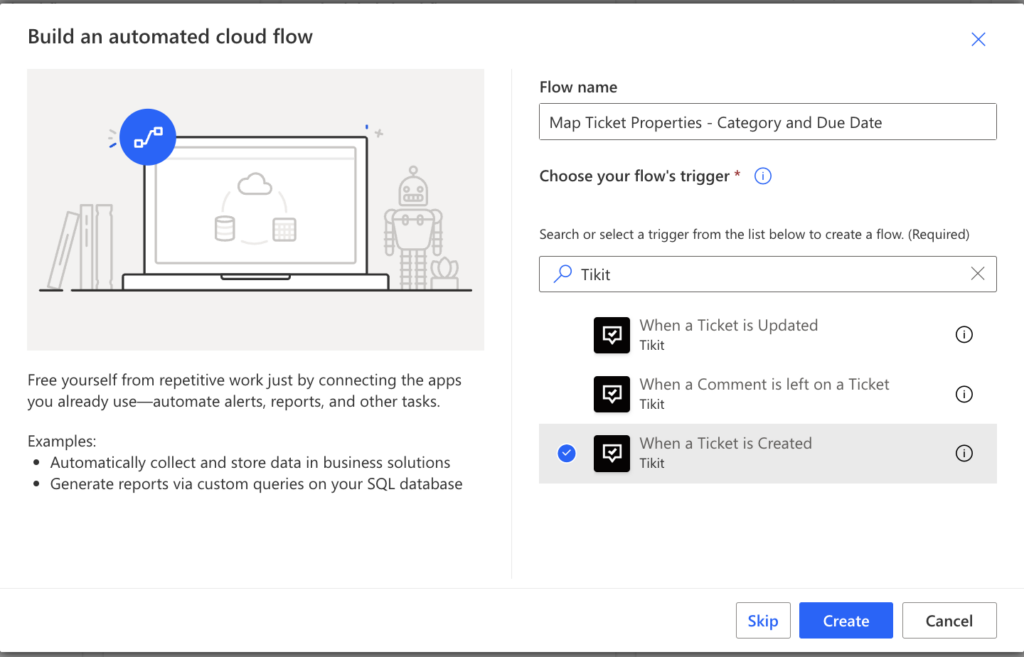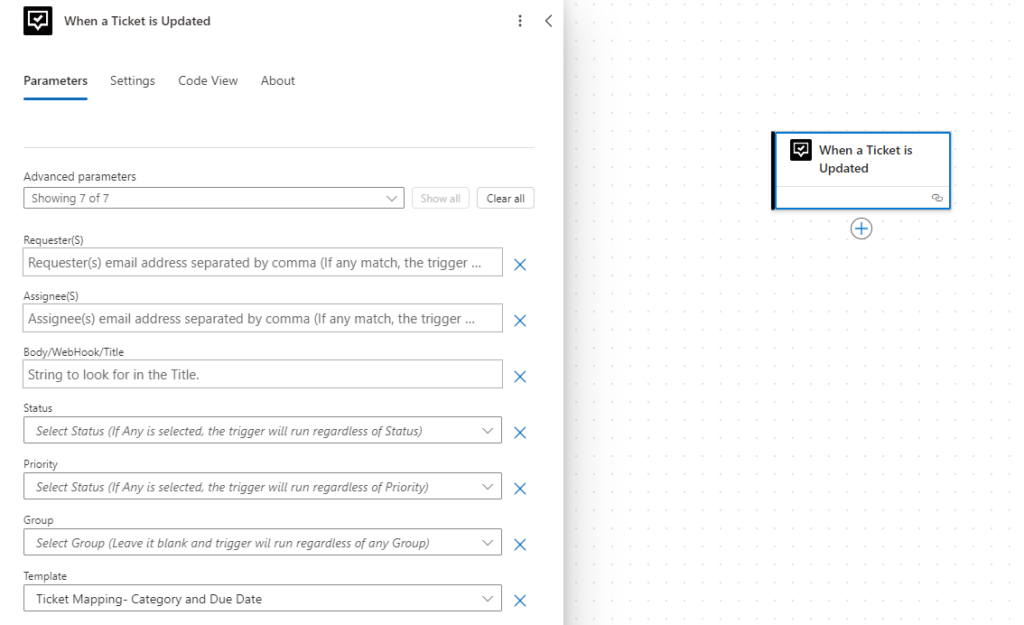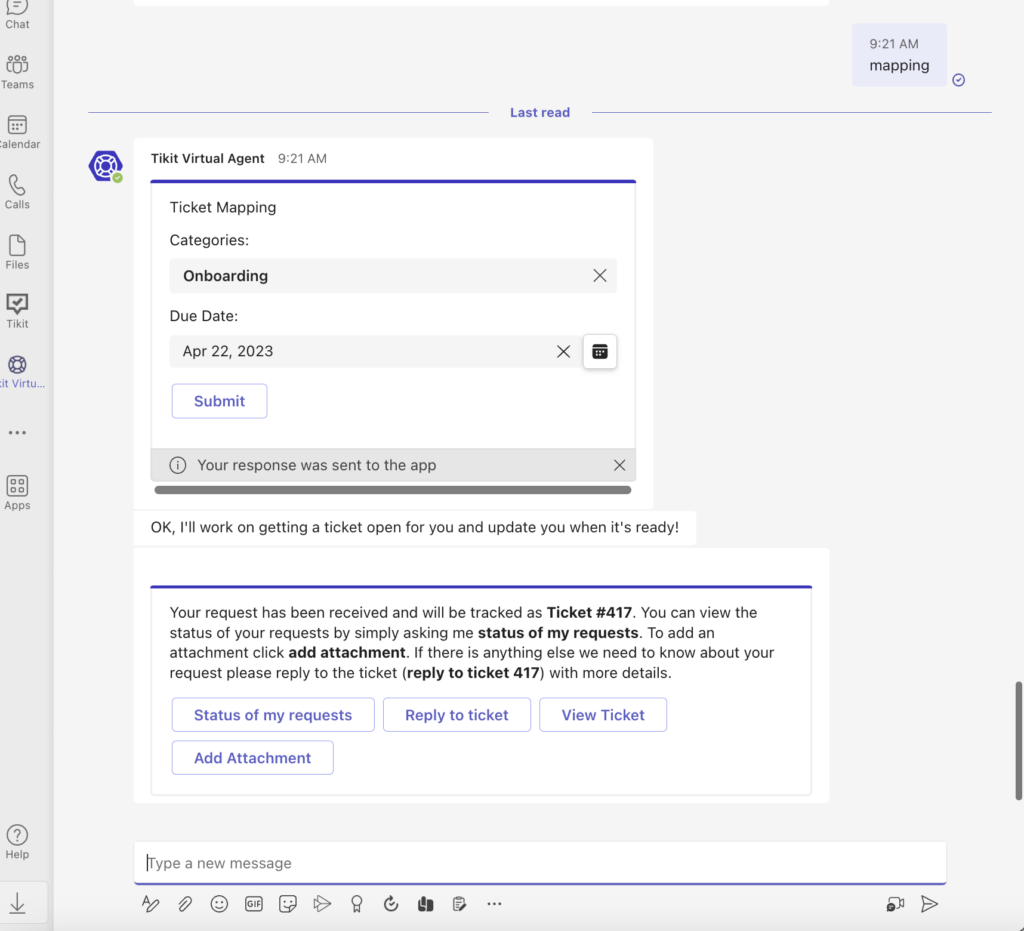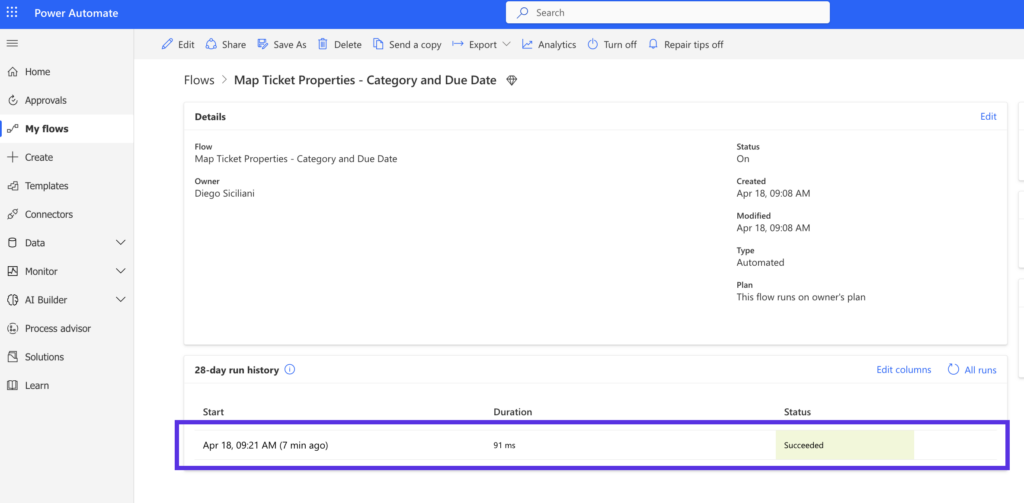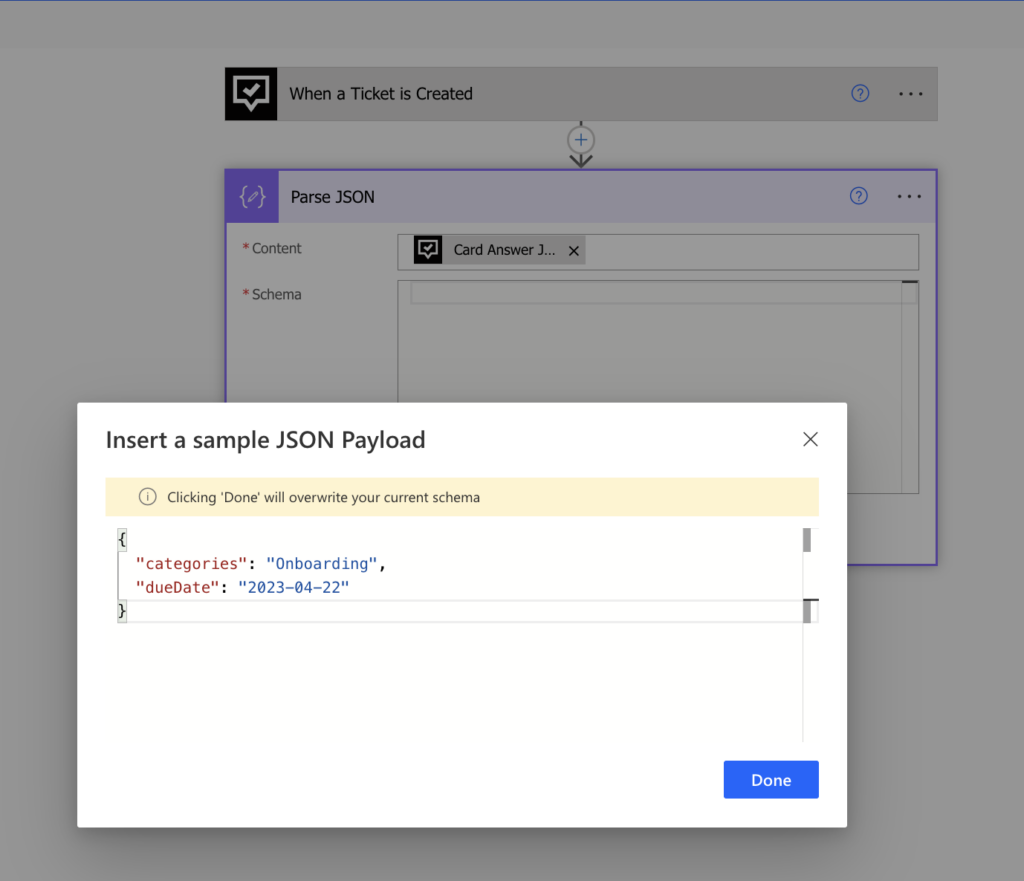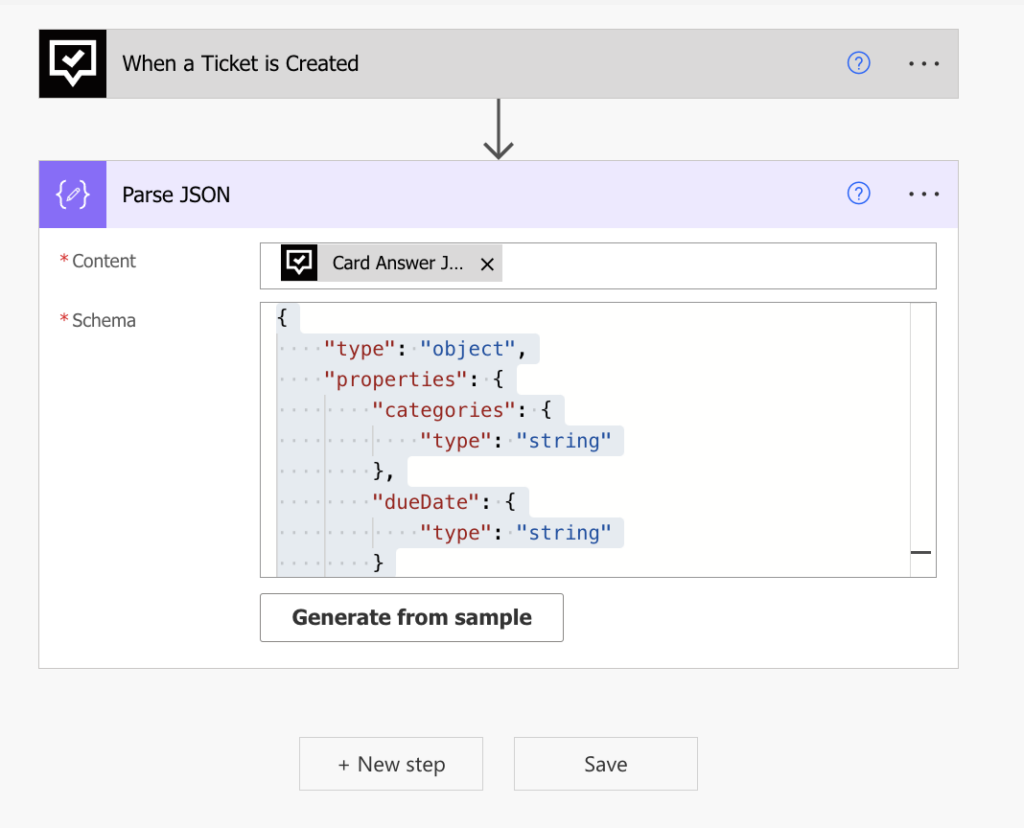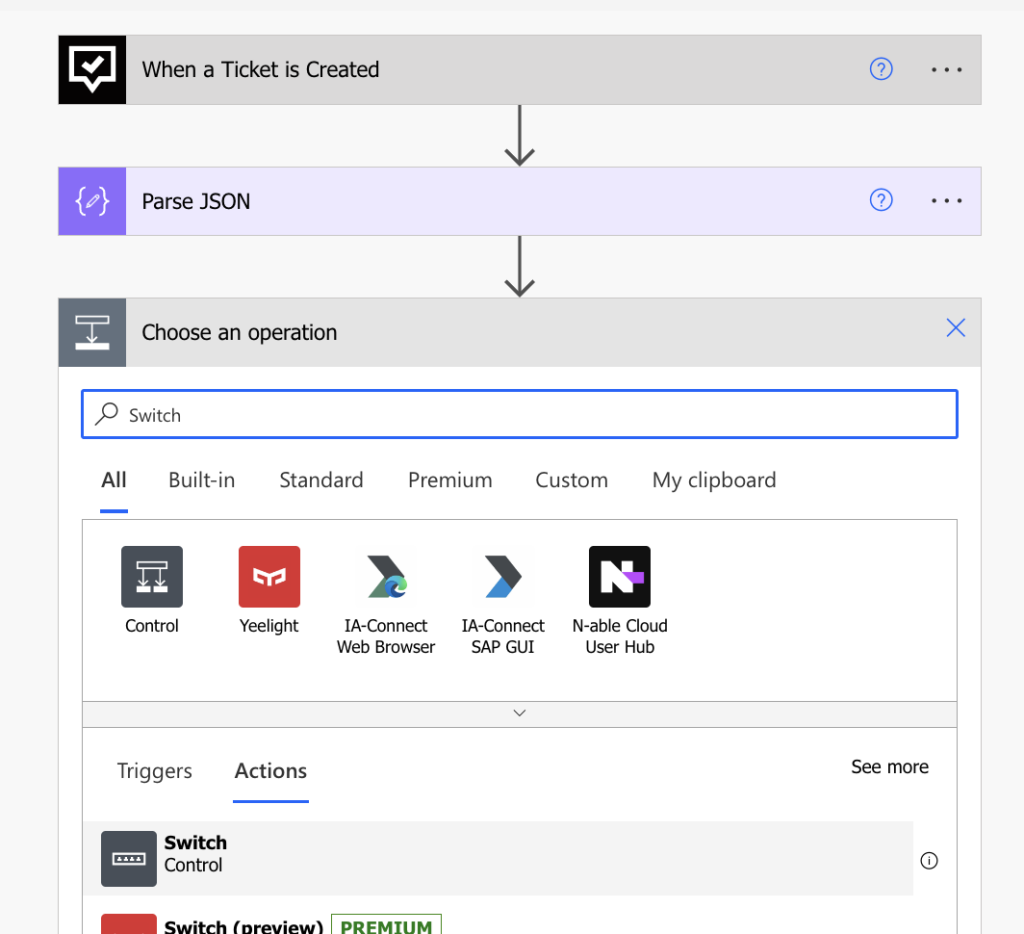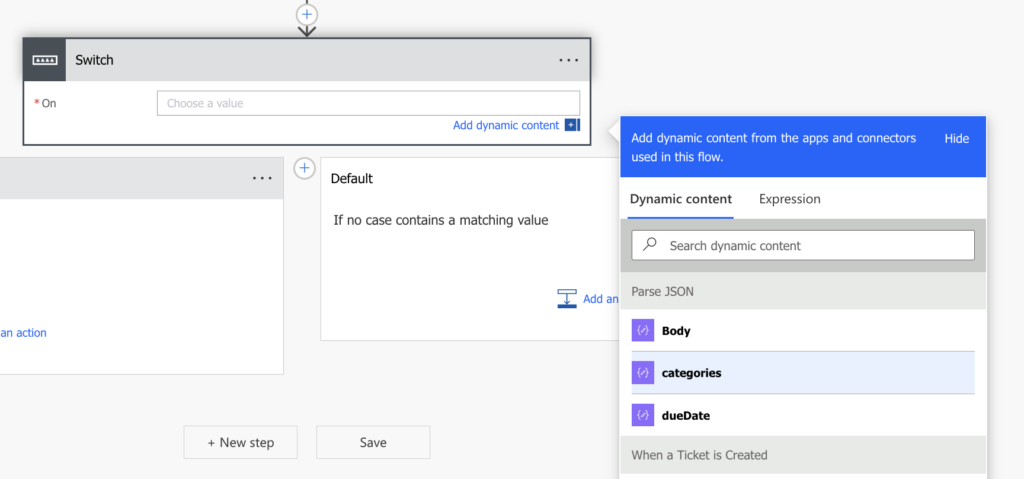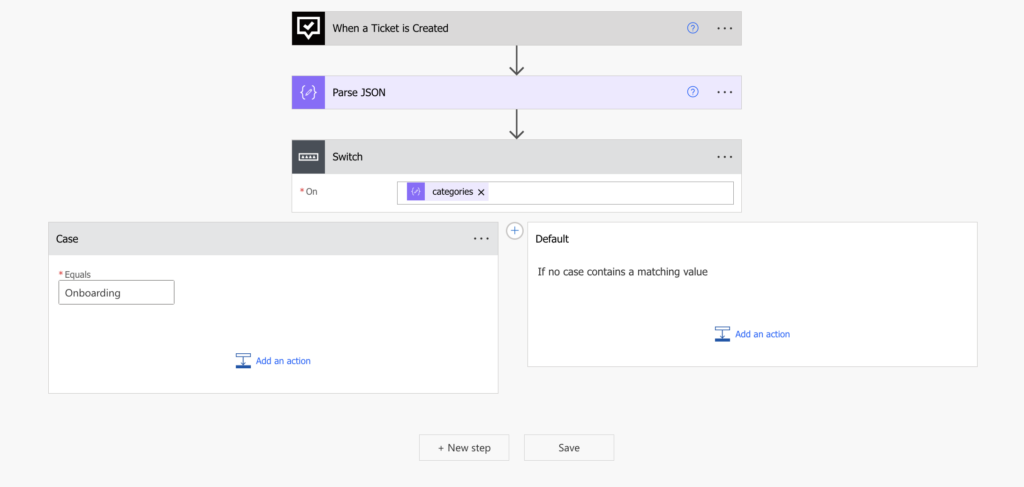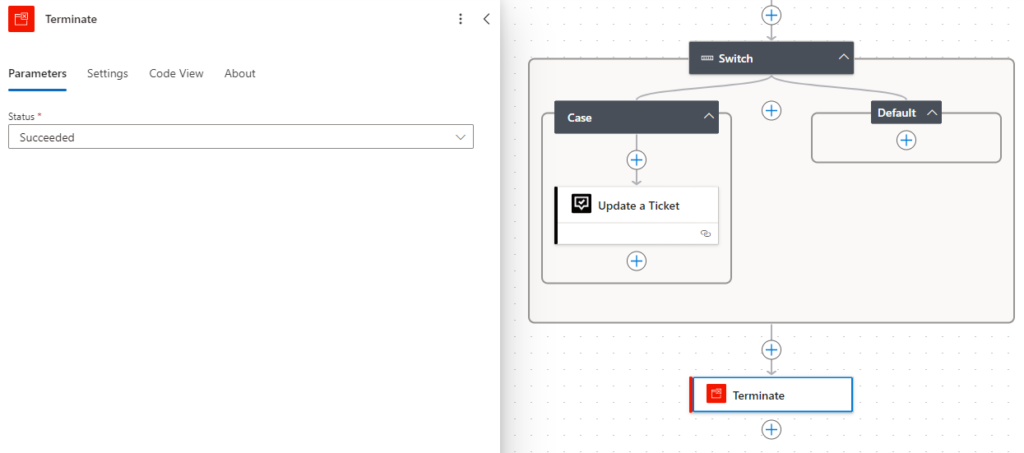Tikit provides the ability for customers to create Templates with Custom Forms to add additional information to a Ticket. In some scenarios, you may want to map certain Custom Form properties to a Ticket property such as Category or Due Date. With Tikit’s native integration into M365, you are able to easily leverage Microsoft Power Automate (PA) to map any Custom Form property you create in your environment.
In this help article, we will walk you through the steps to map a Custom Form Categories drop down and Date picker to the Ticket properties Category and Due Date using PA. You can use this example to map other Custom Form properties in your environment.
Note: You can also reference the Tikit Setup Series – Map Custom Form to Request Title section for a full video walkthrough.
Create Template and KB
Within web.tikit.ai – Templates we have created a simple Template named Ticket Mapping – Category and Due Date and the Template Settings properties are left as default.
The Custom Form is using:
- Input.ChoiceSet to specify the Categories we want to map, with the Name and Value being friendly names for the Agent or End User to select from
- Input.Date to specify the Due Date we want to map
In Microsoft Power Automate we will be able to interpret the options selected and then map those respective options to Ticket properties.
We have then associated this new Template to a Knowledge Base (KB) article, and given it some simple phrases for the Tikit Virtual Agent (TVA) to bring back the Custom Form.
Create Power Automate Flow
Process Custom Form
We will now create a Power Automate flow to evaluate the creation of Tickets when the Ticket Mapping – Category and Due Date template is used and then map the Custom Form properties to the created Ticket.
In Power Automate:
- Create a new Automated cloud flow
- Give it a Flow name
- Search for the Trigger: Tikit
- Select When a Ticket is Created
- Select Create
On the Parse JSON action for Content, we will need to search for the Card Answer Json ticket property and select it to populate it in the Parse JSON Action – Content property.
The Card Answer Json property is where the Custom Form answers are stored, and will need these answers to capture what Category and Due Date were selected.
We will now need to create a ticket within TVA so that this Power Automate flow can capture the Schema and be able to interpret the templates’ Custom Form properties allowing for us to continue creating the PA flow.
We will go to TVA in Microsoft Teams, and initiate the ticket creation process by typing the phrase mapping and retrieving our Custom Form to create a new ticket.
Now that we can evaluate the Custom Form answers, and Category and Due Date are available to the Power Automate flow, we will use these properties to map them back to a Ticket. We will do this by using a Power Automate Control – Switch Action to evaluate the Custom Form properties and then set the appropriate Ticket properties.
We will want to evaluate if the Category selected in the Custom Form is Onboarding, so we will be using the Case statement to interpret the property and if it = Onboarding then update the respective Ticket Category property to Onboarding.
In the Case statement for the Equals property, type Onboarding.
We will set the the following properties for the Update a ticket action:
- Ticket ID: When a Ticket is Created – Tikit ID
- Category: Onboarding
- Due Date: Parse JSON – due Date
If you want to map other selected Custom Form Categories or a Due Date to a Ticket, you can add another Case statement and repeat the steps outlined in the section Map Category and Due Date.
Your Power Automate Flow has now been setup, and when you create future tickets that have the Ticket Mapping – Category and Due Date template selected the appropriate Ticket Category and Due Date property will be updated.

